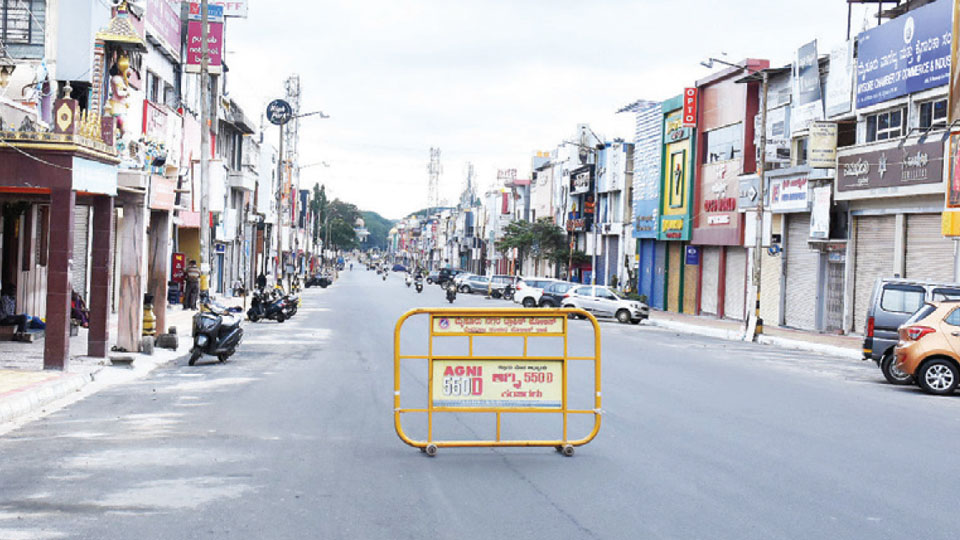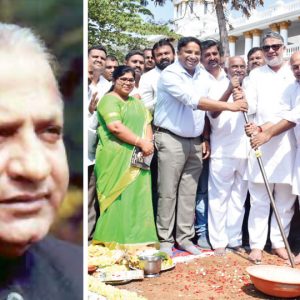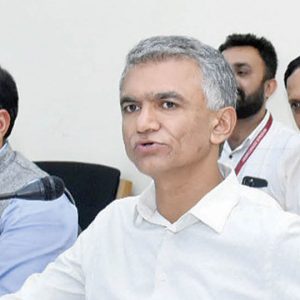
Every time there is failure of rains and the river Cauvery drains, there is fire in the plains.
Yesterday, a Karnataka Statewide Bandh was organised to voice opposition to the Government’s decision to release Cauvery water to Tamil Nadu.
But what purpose did the recent bandhs serve? Did it bring rain? Did it stop the Government from giving water? Did it force our leaders to come together and find a permanent solution? No. Instead, it hurt the economy of Bengaluru and Karnataka. Worse, it hurt the daily wagers.
According to The Times of India, industry bodies like Karnataka Employers Association (KEA) and Federation of Karnataka Chambers of Commerce & Industry (FKCCI) estimate that the 2-day bandh may have cost our State a loss of around Rs. 4,000 crore.
The Cauvery River water sharing has been an issue since 1924! But it got complicated post-independence and even more so after the State Reorganisation. It’s been 99 years and we still don’t have a solution!
But are bandhs and rasta-rokos the solution? Every time there is a Cauvery protest, it gets hijacked by politicians who sniff a political opportunity.
Back in 2012, when Jagadish Shettar was the CM and released water to Tamil Nadu to first comply with the Supreme Court order as it would help Karnataka, which was going to file a review petition before the Apex Court, like it is being done now, Siddharamaiah, who was then the Opposition leader, had retorted, “The Government should not have released water and should have faced the consequences. Tamil Nadu is demanding water for crops, we need it for drinking.” Where is Siddharamaiah’s political bravado now?
There are State-wide bandhs, protests on the streets and debates in Vidhana Soudha, yet no permanent solution manifests. Why? Is it because politicians don’t want one?
We say this because we have neither heard any political party debate about the ‘formula’ used to calculate water sharing, especially one applicable after a failed monsoon nor have we heard any discussion on alternative solutions to handle failed monsoon.
Not a single party talked about recharging the groundwater in Bengaluru and Mysuru so these cities can be independent of Cauvery water, which the farmers need. Instead, our leaders have silly solutions.
In 2019, our State Government ordered prominent Temples under the Muzrai Department, which are ‘financially sound,’ to perform special pujas on June 6 to invoke the Rain Gods. The cost? Rs. 10,000 per puja to be taken from the devotees’ offering.
In short, instead of forcing the public to recycle water and protect water reservoirs, the Government recycled the Gods’ money to appease the Gods! Wah!
It is time we made alternative arrangements when the rain fails, and it has to be done by the State Government. This is what protestors must demand.
The biggest issue is farmers not getting water as there is enormous demand in Bengaluru, the commercial hub of our State, so why not save the lakes of Bengaluru and provide water to the city like it was done decades ago?
Bengaluru was once called ‘The land of a 1,000 lakes’. Today, it is number two on a United Nations list of cities that will run out of drinking water in the next 15 years! It is time to look at our past and learn.
Bengaluru has no perennial river close by, so lakes became the mainstay for Bengaluru’s survival. But since it has altitude, Bengaluru is 3,000 feet above sea level. Kempegowda, the Founder of Bengaluru, and later Lieutenant-General Richard Hieram Sankey (after whom Sankey Tank is named) developed a ‘Cascading of lakes’ system.
This was a natural rainwater harvesting system wherein the run-off water (rainfall) was collected first in the lakes at the higher level. Once these filled up, they flowed to the lakes on the next level via 30-ft wide inlets called Raja Kaluves. They were not just reservoirs but also recharged groundwater. More importantly, they prevented flooding.
The system was so efficient that when the Captain of the British East India Company came to Bengaluru, he described it as the ‘Land of a thousand lakes.’
Even today, in the Revenue Survey maps of Bengaluru, there are 937 lakes listed. But the shocking fact is that on the ground, there are only 17 ‘live’ lakes left!
Senior scientist of the Indian Institute of Science, T. V. Ramachandra, had observed that in the past Bengaluru had no Cauvery water but still there was no water problem, because of the lakes! He says, “The city receives around 21 TMC of rain annually and in the 1800s its lakes could hold 35 TMC of water.”
Even if the government revives the few lakes left today they can store 15TMC of water and Bengaluru needs about 20 TMC today!
In Mysuru also, an indifferent administration over the years has killed too many grand lakes. Jeevannarayana Katte, now called JK Grounds, was a small lake. It went dry as buildings surrounded it, and the feeder channels were blocked. Then there is Doddakere Maidan in front of the Palace; it suffered the same fate.
Subbarayanakere in front of Shantala Theatre (now closed) also used to be a lake; now it’s dry. Even the channels to Kukkarahalli Lake are covered up, and freshwater is not coming through. Instead, sewage water does.
Then, other lakes in the city have been slowly encroached upon, like Lingambudhi Lake near Vivekanandanagar, Devanur Kere in N.R. Mohalla and lakes on the Nanjangud Road.
India is likely to become ‘water scarce’ by 2050. Like most major rivers, the Cauvery has seen declining water volumes. Erratic and variable rainfall, rapidly depleting groundwater, land-use modifications and water-intensive cropping patterns will only worsen the Cauvery water dispute and the tribunals will not be able to give us reprieve.
But what will save us from drought is water harvesting, rejuvenating lakes and protecting the environment of Kodagu, from where most of Cauvery flows. Sadly, the Government is not discussing implementing these, nor are the protestors!
e-mail: [email protected]








Recent Comments